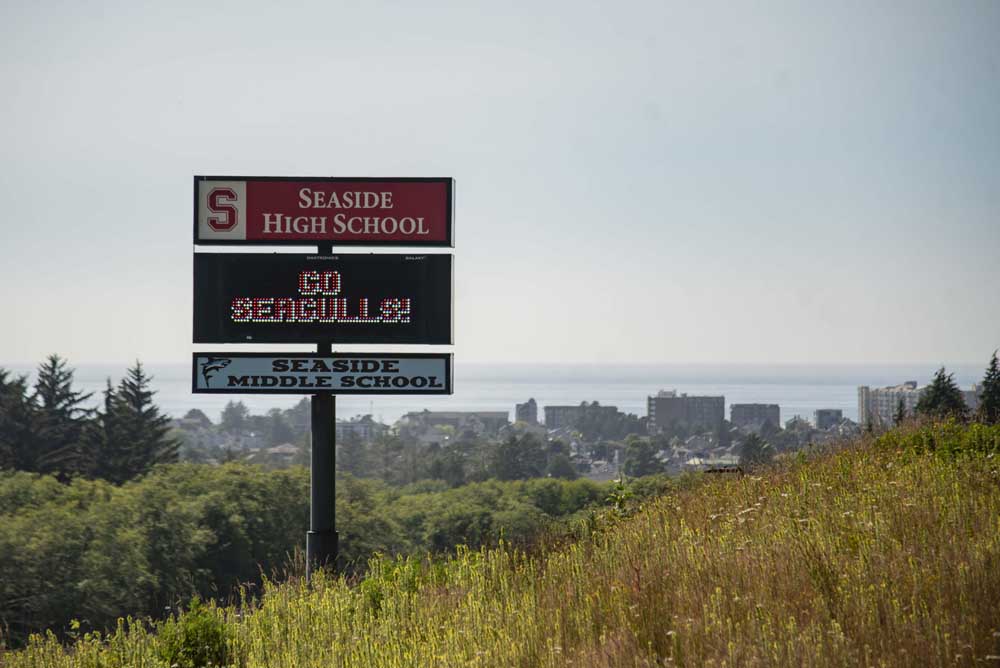In Seaside, students will have to lock away their cellphones
Published 10:15 am Monday, July 15, 2024

- The Seaside School District will restrict cellphone use by high school and middle school students.
SEASIDE — Starting in the fall, high school and middle school students in Seaside will have to remember one more thing to add to their backpacks and bring to school each morning: a pouch designed for locking away their cellphones.
The pouch, made by Los Angeles-based company Yondr, is a key component of the Seaside School District’s effort to restrict phone use throughout the school day, part of a nationwide trend of schools rethinking the role of technology in classrooms.
Florida and Indiana have already passed laws restricting cellphone use at schools, and other states, such as California, are looking to follow. In Oregon, however, the choice of how to regulate cellphones on campus is largely left to school districts.
Seaside is the first district in Clatsop County to take action.
Jeff Roberts, the principal of Seaside High School, began thinking seriously about a cellphone ban in December, driven by clear signs that students were increasingly disengaged from their academic work and from face-to-face connections with teachers and peers.
“Having a child myself and just being in schools for the last 20 years, it’s saying, what are some things we can do to reconnect with our kids, and to really get our kids back after the pandemic?” Roberts said.
Roberts spoke with Nick Lupo, the principal of Taft High School in Lincoln County, which began using the Yondr pouches last year.
“He walked us through the pitfalls and the successes that they’ve had,” Roberts said. “And for them, it’s been super impactful in terms of seeing students engage with one another. More positivity around the building, kids engaged in classes, teachers spending time teaching, not tracking down phones.”
Kept in backpacks
When the policy goes into effect in Seaside this fall, students will be required to turn off or silence their phones before placing them in the Yondr pouch at the beginning of the day. The pouch will then be locked and kept in students’ backpacks for the duration of the day, including at lunch and between periods.
Roberts explained that the school district chose the pouches — as opposed to “phone lockers,” where phones would stay in a central location at the school — in part to limit liability and quell some nerves from students.
“I think there’s a sense of security with students still retaining their devices, even though they’re inaccessible,” Roberts said.
School administrators recognize that the updated policy will be an adjustment for students and families. Roberts held listening sessions with students in the spring, and presented the policy at a school board meeting in June.
“We chose to announce it in the spring, versus surprising everybody in the fall,” he said, “giving (students) and families opportunities to process what that looks like (and) to make arrangements to learn how to communicate differently.”
Superintendent Susan Penrod noted that phones can be a useful tool in the classroom, but not when it comes at the expense of students texting their way through an entire class. Instead, school-assigned laptops can take their place.
“All of our students are one-to-one with Chromebooks,” she said. “So phones aren’t as much of a tool now as they are a distraction.”
Susan Baertlein, a high school English teacher, hopes the cellphone ban will also create more opportunities for students to engage more meaningfully in social settings in school.
“Being able to be forced to actually interact face-to-face and work on those soft skills of interpersonal communication is a huge thing that they’re supposed to learn in middle school and high school,” Baertlein said. “And our kids struggle with that.”
Similar move in Astoria
The Astoria School District could also be moving toward a cellphone ban for students in middle school and high school. At a June school board meeting, Lynn Jackson and Chad Madsen, the high school’s principal and vice principal, presented a proposal similar to Seaside’s.
“We’ve really had a very small window of time to sort of study and see how this has been affecting our kids,” Madsen said at the meeting. “And really, the generation right now that’s in grades six through 12, are the first who have essentially grown up with smartphones in their hands.
“We are definitely seeing the devices used in manners that disrupt the educational process,” he added. “I think that is really clear.”
Astoria plans to finalize its policy when school district staff return in August. As in Seaside, administrators are considering implementing the use of Yondr pouches. However, the pouches run about $25 to $30 per student, and unlike Seaside — which is relying on leftover federal stimulus funds to purchase them — Astoria is coming off a difficult budget season, and may have to look to outside funding sources.
“By the time we secure funds, by the time we make the order, by the time the pouches are delivered, I don’t see that being likely on Sept. 4,” Jackson said. “So what we could be striving to do is have a phone-free classroom model, and then potentially coming back from winter break having a phone-free school, when we have the logistics in place.”
School leaders emphasized that being parted from their phones might be a big adjustment for students, but one that will — hopefully — benefit them both academically and socially.
“I don’t think kids are too excited about it. That’s not necessarily the attitude, but I would tell you that they understand why, and they get it,” Roberts said. “And so while they don’t love it, I think they are at peace with it.”





